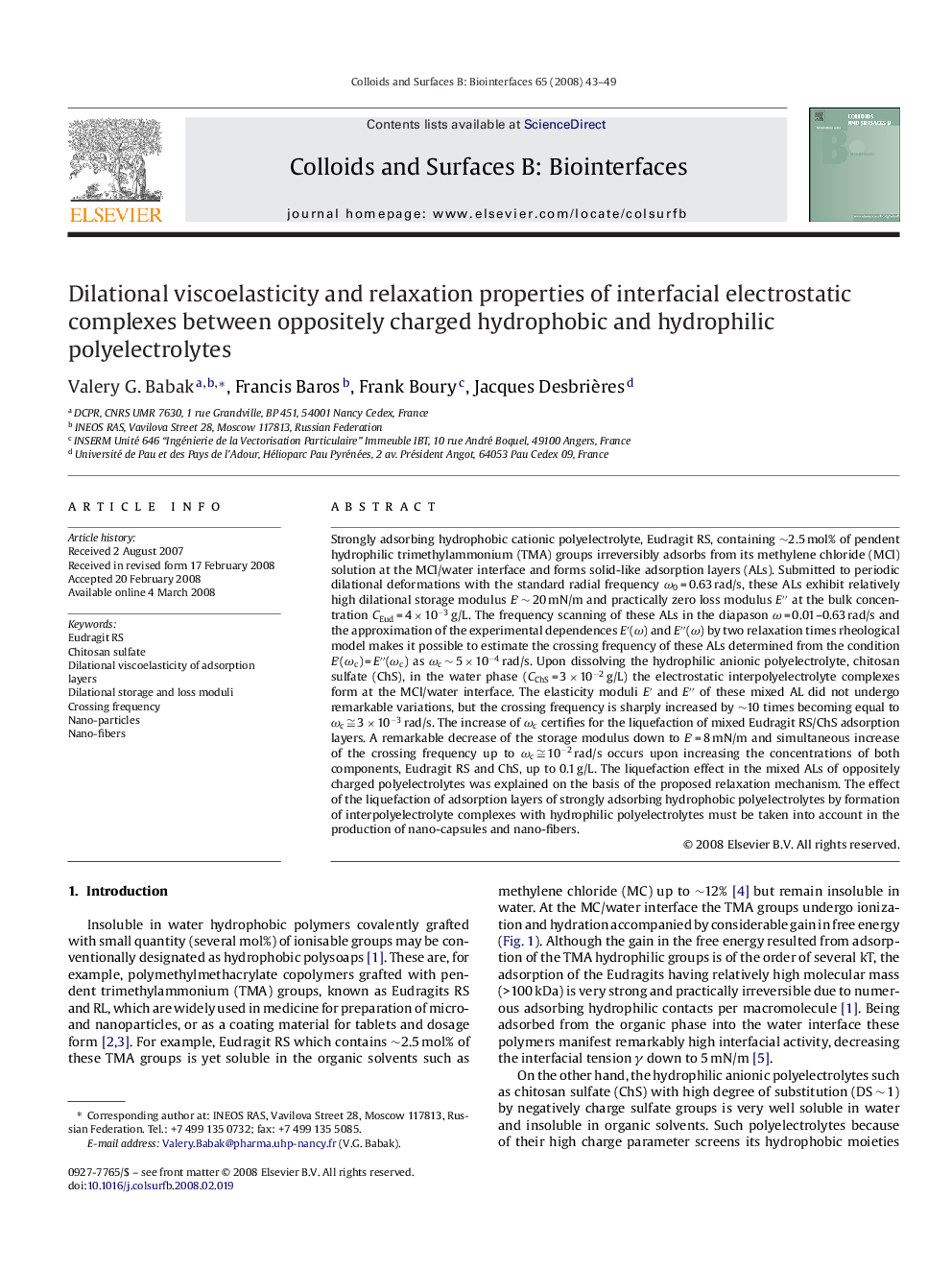| Article ID | Journal | Published Year | Pages | File Type |
|---|---|---|---|---|
| 602813 | Colloids and Surfaces B: Biointerfaces | 2008 | 7 Pages |
Strongly adsorbing hydrophobic cationic polyelectrolyte, Eudragit RS, containing ∼2.5 mol% of pendent hydrophilic trimethylammonium (TMA) groups irreversibly adsorbs from its methylene chloride (MCl) solution at the MCl/water interface and forms solid-like adsorption layers (ALs). Submitted to periodic dilational deformations with the standard radial frequency ω0 = 0.63 rad/s, these ALs exhibit relatively high dilational storage modulus E′ ∼ 20 mN/m and practically zero loss modulus E′′ at the bulk concentration CEud = 4 × 10−3 g/L. The frequency scanning of these ALs in the diapason ω = 0.01–0.63 rad/s and the approximation of the experimental dependences E′(ω) and E′′(ω) by two relaxation times rheological model makes it possible to estimate the crossing frequency of these ALs determined from the condition E′(ωc) = E′′(ωc) as ωc ∼ 5 × 10−4 rad/s. Upon dissolving the hydrophilic anionic polyelectrolyte, chitosan sulfate (ChS), in the water phase (CChS = 3 × 10−2 g/L) the electrostatic interpolyelectrolyte complexes form at the MCl/water interface. The elasticity moduli E′ and E′′ of these mixed AL did not undergo remarkable variations, but the crossing frequency is sharply increased by ∼10 times becoming equal to ωc ≅ 3 × 10−3 rad/s. The increase of ωc certifies for the liquefaction of mixed Eudragit RS/ChS adsorption layers. A remarkable decrease of the storage modulus down to E′ = 8 mN/m and simultaneous increase of the crossing frequency up to ωc ≅ 10−2 rad/s occurs upon increasing the concentrations of both components, Eudragit RS and ChS, up to 0.1 g/L. The liquefaction effect in the mixed ALs of oppositely charged polyelectrolytes was explained on the basis of the proposed relaxation mechanism. The effect of the liquefaction of adsorption layers of strongly adsorbing hydrophobic polyelectrolytes by formation of interpolyelectrolyte complexes with hydrophilic polyelectrolytes must be taken into account in the production of nano-capsules and nano-fibers.
